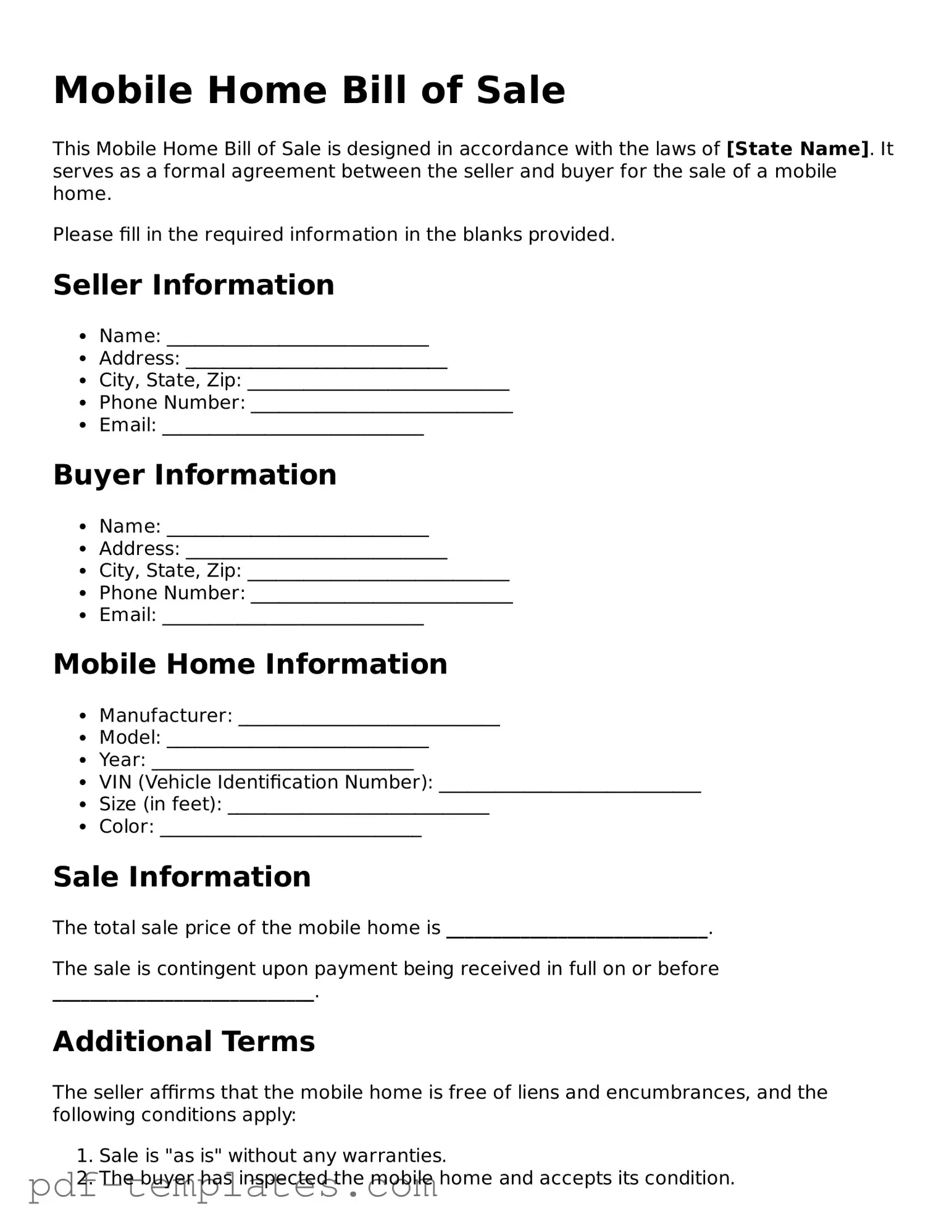The Mobile Home Bill of Sale form shares similarities with a Vehicle Bill of Sale. Both documents serve as proof of transfer of ownership between a seller and a buyer. Just as a Vehicle Bill of Sale outlines details like the make, model, year, and Vehicle Identification Number (VIN) of the vehicle, the Mobile Home Bill of Sale includes specifics about the mobile home, such as its serial number, dimensions, and any included accessories. Both forms typically require signatures from both parties to validate the transaction, ensuring that the transfer is legally recognized.
For those dealing with various forms of ownership transfer, it's essential to have access to comprehensive resources. Each document serves a specific purpose within its context, whether it's the Mobile Home Bill of Sale, the Boat Bill of Sale, or others, ensuring proper documentation and legal protection. To explore essential resources that include all necessary forms, you can visit All California Forms, which provides valuable links and information for your needs.
Another document that resembles the Mobile Home Bill of Sale is the Real Estate Purchase Agreement. While the latter is more comprehensive, both documents facilitate the transfer of property ownership. A Real Estate Purchase Agreement details the terms of sale, including the purchase price, contingencies, and closing date, much like how the Mobile Home Bill of Sale summarizes the sale terms for the mobile home. Both documents aim to protect the interests of the buyer and seller, providing a clear record of the transaction.
The Lease Agreement is also comparable to the Mobile Home Bill of Sale, particularly in situations where the mobile home is rented rather than sold. A Lease Agreement outlines the terms under which a tenant can occupy a property, including rent amount, duration, and responsibilities. Similarly, if a mobile home is leased, a Mobile Home Bill of Sale can document the sale of the mobile home after the lease period ends. Both documents establish rights and responsibilities for both parties involved.
Lastly, the Bill of Sale for Personal Property is another document that aligns closely with the Mobile Home Bill of Sale. This general form can be used for various types of personal property transactions, such as selling furniture, electronics, or other goods. Like the Mobile Home Bill of Sale, it serves as evidence of the transfer of ownership and includes details about the item being sold. Both documents ensure that the buyer receives clear title to the property and that the seller is released from any future claims regarding the item.
